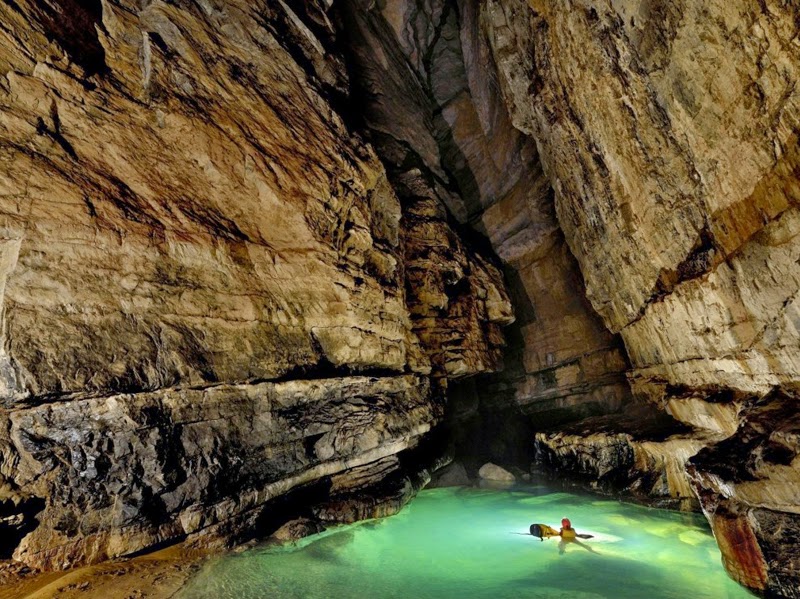15 photographers and expert cavers were exploring in the Chongqing province of China, when they stumbled on the hidden cave�s entrance, Er Wang Dong. They managed to climb it eventually and were surprised to see an enormous space that contained a cloud. They took the first ever photos of the natural wonder.
The network of caves includes Cloud Ladder Hall that measures approximately 51,000 metres squared. This is about the size of 12 football fields.
The roof is concealed by fog 820 feet above.
The cave system they discovered is not the only one that has clouds inside, since when humidity inside the caverns rises into colder air, it forms clouds inside the gigantic enclosed spaces.
Even professionals found it dangerous to explore the cave.
"Most caves either are accessed by large walking entrance, some require a long deep swim, other may be very vertical in nature where you need ropes to abseil (rappel) down the walls deep into the caves," Shone said.
"We had to be aware of high water levels inside the caves, especially when it rained heavily on the surface. The drainage catchment to these caves is massive and soon the caves can be extremely dangerous and impassable."
He explained that nitrate miners had previously used some of these caves, but they had not been explored properly. All its major passageways had never seen light and were deep underground.
"Where else on Earth can still hold secrets and mysteries of discovery? That's what I love so much about exploring."
(Source: www.wunderground.com)
 |
| Image credit: Robbie Shone/Caters News Agency(taken from) |
The network of caves includes Cloud Ladder Hall that measures approximately 51,000 metres squared. This is about the size of 12 football fields.
 |
| Image credit: Robbie Shone/Caters News Agency(taken from) |
 |
| Image credit: Robbie Shone/Caters News Agency(taken from) |
 |
| Image credit: Robbie Shone/Caters News Agency(taken from) |
"I had never seen anything quite like the inside cloud ladder before," Manchester caver and photographer Robbie Shone, a team member said. "Thick cloud and fogs hangs in the upper half of the cave, where it gets trapped and unable to escape through the small passage in the roof, 250m above the ground."
 |
| Image credit: Robbie Shone/Caters News Agency(taken from) |
 |
| Image credit: Robbie Shone/Caters News Agency(taken from) |
 |
| Image credit: Robbie Shone/Caters News Agency(taken from) |
 |
| Image credit: Robbie Shone/Caters News Agency (taken from) |
 |
| Image credit: Robbie Shone/Caters News Agency(taken from) |
 |
| Image credit: Robbie Shone/Caters News Agency(taken from) |
 |
| Image credit: Robbie Shone/Caters News Agency(taken from) |
 |
| Image credit:Robbie Shone/Caters News Agency (taken from) |
He explained that nitrate miners had previously used some of these caves, but they had not been explored properly. All its major passageways had never seen light and were deep underground.
 |
| Image credit: Robbie Shone/Caters News Agency(taken from) |
 |
| Image credit: Robbie Shone/Caters News Agency(taken from) |
"It is always very special, knowing that you are the first to step foot into a cave or somewhere where nobody had previously seen, not knowing what you might find and discover," he said.
 |
| Image credit: Robbie Shone/Caters News Agency(taken from) |
 |
| Image credit:Robbie Shone/Caters News Agency (taken from) |
 |
| Image credit: Robbie Shone/Caters News Agency(taken from) |
 |
| Image credit:Robbie Shone/Caters News Agency (taken from) |